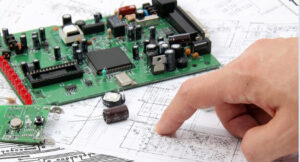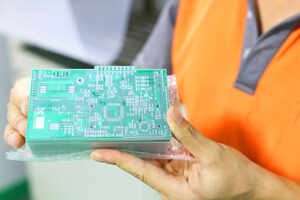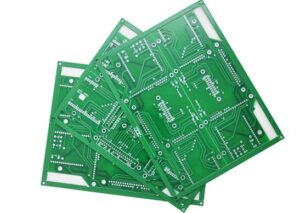NEWS

How to prevent oxidation of gold-plated PCB
the surface of the gold deposit is prone to oxidation problems when exposed for a long time or stored improperly, which not only affects its appearance but may also cause damage to its electrical performance.

What is the difference between ODM and OEM in PCBA production
The ODM and OEM models in PCBA production are different. ODM emphasizes comprehensive services from design to manufacturing to meet customized needs; OEM focuses on efficient production and is suitable for bulk demand.

RoHS standard requirements for SMT
The RoHS standard restricts the use of harmful substances in electronic and electrical equipment, and the requirements for SMT include changes in solder, selection of PCB materials, process adjustments, and increased environmental requirements.

Requirements of SMT for Circuit Board Design
SMT has put forward various requirements for circuit board design, and meeting these requirements will help improve the efficiency and yield of SMT SMT, reduce production costs, improve product quality and reliability, and promote the sustainable development of the electronic manufacturing industry.

What are the reliability tests for PCB boards?
The reliability testing of PCB boards is a complex and rigorous process, covering multiple aspects such as soldering quality, functionality, environmental adaptability, and specialized testing.

PCB design should pay attention to spacing data
PCB design should pay attention to spacing data: 1. Spacing between wires; 2. Pad aperture and pad width; 3. The spacing between solder pads; 4. The distance between the copper sheet and the edge of the board.

The limitations of online quotation in SMT surface mount processing
SMT surface mount processing is difficult to quote online due to complexity, customization requirements, and cost efficiency considerations. Offline quotation and communication can better meet the needs, ensure the smooth progress of the project, and maintain long-term cooperative relationships.

SMT production line workflow and technical advantages
The basic process of SMT production line includes PCB mounting, solder paste printing, SMD mounting, reflow soldering, plug-in soldering, wave soldering, AOI inspection, and final offline and packaging.

Classification and Application of Solder Paste in SMT
There are various classifications of solder paste performance in SMT processing, including melting point, flux activity, viscosity, cleaning method, lead content, and tin powder particle size. Choosing the appropriate solder paste is crucial for welding quality and production efficiency.

How many layers are there on a PCB board?
PCB boards can be divided into single panel, double-sided board, and multi-layer board. Different types of PCB boards are suitable for different types of circuits and have different manufacturing processes and characteristics.

How to control the cost of SMT surface mount production?
In the production process of SMT patches, cost control involves multiple aspects, including material costs, equipment maintenance, production efficiency, quality management, etc.

Analysis of PCBA Process Flow
According to different production technologies, PCBA has various process flows, including single-sided mixed assembly process, single-sided DIP insertion process, single-sided SMT mounting process, single-sided mounting and double-sided mixed assembly process, double-sided SMT mounting process and insertion mixing process, and so on.





